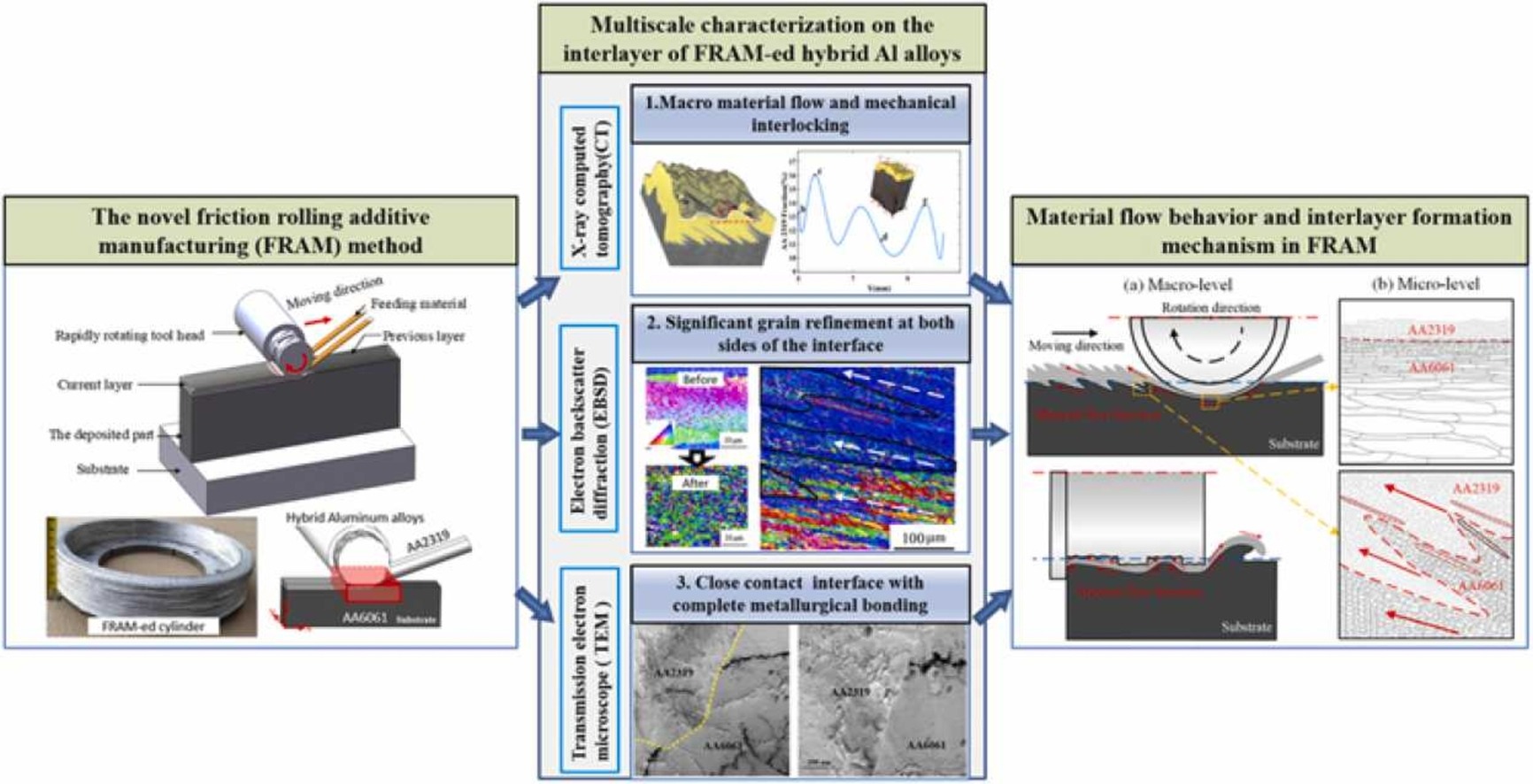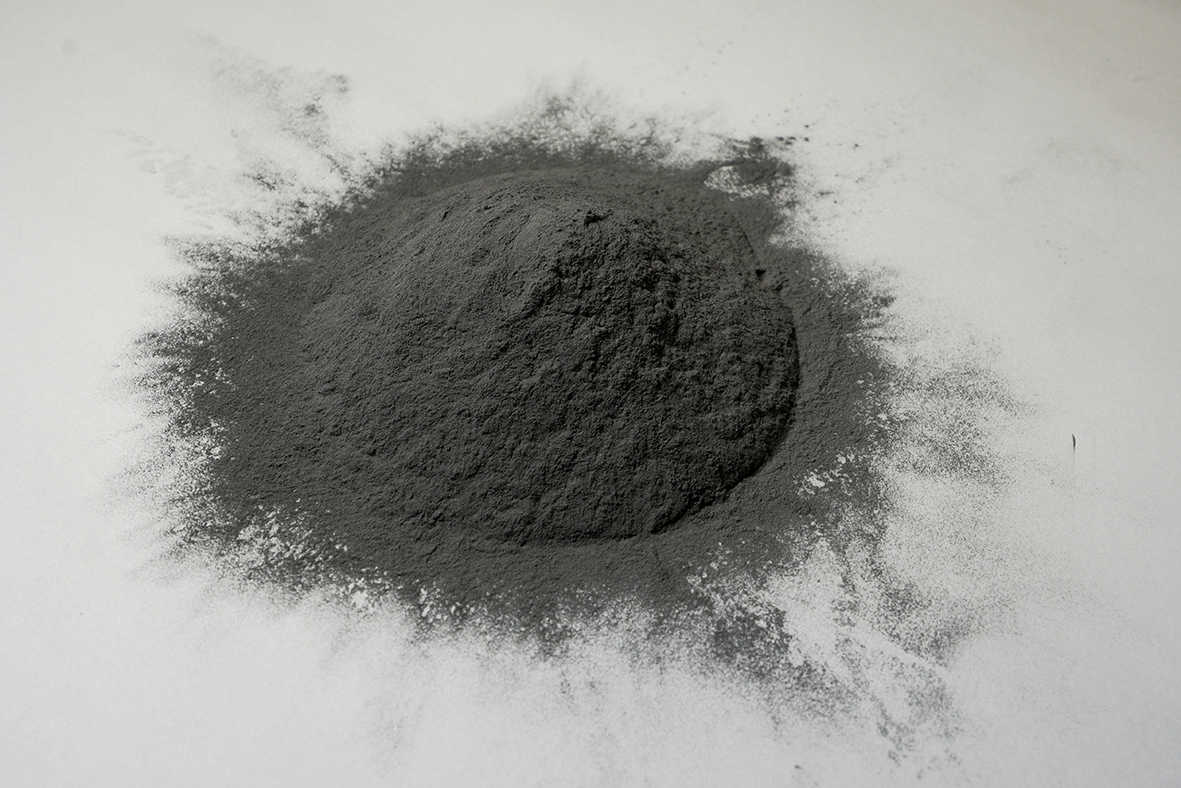Researchers from the Beijing University of Technology have published a new paper exploring the bonding mechanisms between the deposit and substrate during the friction rolling additive manufacturing (FRAM) process for aluminum alloys.
A new innovative, low-cost solid-state technology, FRAM has significant potential for the development of high-strength aluminum alloys for use in the aerospace and defense industries.
The scientists believe the findings of their study will aid the understanding of the fundamentals of the FRAM process, while also providing future recommendations for parameter optimization and tool head design.

Aluminum alloy 3D printing
High strength aluminum alloys are desirable materials of choice for applications within the aerospace and defense sectors, due to their low density, high modulus and specific strength, high fatigue strength, exceptional fracture toughness, and superior corrosion resistance.
The use of aluminum alloys for additive manufacturing has gained considerable attention in recent years, having been deployed to enhance the capabilities of heat exchangers, fabricate improved motorsport parts, and produce casings for satellites among a wide variety of other applications.
Research is continually ongoing to deepen the metallurgy understanding of 3D printing with aluminum alloys, and how the structural integrity of 3D printed aluminum alloys can be improved, and new aluminum alloy materials for additive manufacturing are under constant development.
For instance, last year Rio Tinto provided the first North American supply source of scandium oxide-aluminum alloy for 3D printing to Amaero, while in April Gränges Powder Metallurgy launched its AM S220 high-performance aluminum alloy for LPBF 3D printing.

Investigating FRAM aluminum alloys
Solid-state friction-based 3D printing techniques like additive friction stir deposition (AFSD), friction stir additive manufacturing (FSAM), and friction surfacing (FS) all have prominent development capability and potential for the development of high-strength aluminum alloys. However, neither FSAM or FS techniques can achieve continuous material addition while AFSD requires expensive and specialized equipment.
To overcome these challenges, the researchers focused on FRAM as a novel, low-cost alternative approach. FRAM works by leveraging a rapidly rotating tool head to generate heat while also allowing for continuous material input. To better understand the solid-state manufacturing process, the researchers sought to study material flow behavior and the mechanism of bonding at the bonding contact during the FRAM process.
To do this, the team deployed a combination of electron backscatter diffraction, 3D X-ray computed tomography and transmission electron microscopy techniques to demonstrate the mechanisms for FRAM-produced hybrid AA2319 and AA6062 aluminum alloys. The scientists chose 2319 aluminum alloy welding wire as the tracer materials and AA6061 as the substrate because the hybrid alloys could be easily recognized from one another.
By investigating the 3D shape of the interlayer using CT scans, the team could observe the principle of interlayer material mixing and material flow behavior at the macro-level. They were then able to examine the microstructure of the FRAM process to reveal the interlayer bonding behavior at the micro-level. Further mechanical testing was conducted to confirm the bonding quality of the hybrid aluminum alloy.
During the printing process, the plasticized material first created thin and elongated grains under the shearing action of the tooltip, and subsequently, its interior shattered to form fine grains with equal dimensions in all directions.
The team was able to draw a number of conclusions from their study. Firstly, a macroscopic mechanically interlocking nonplanar interface was generated due to simultaneous material plastic flow and macroscopic migration behavior. The tool head’s convex thread boosted material flow in the transverse direction which made material mixing in the next layer easier.
Additionally, substantial plastic deformation on both sides of the contact resulted in significant grain refinement, while the high-speed rotating tool head squeezed and sheared the materials at the interface during the FRAM process. Thread protrusion encouraged the lateral flow of plastic materials, which was advantageous for the mixing of interlayers and the formation of uneven surfaces.
Finally, the team observed that a direct contact interface without oxides could be formed between the AA6061 and AA2319 alloys, leading to a strong metallurgical connection.
Through their study, the team believes its findings will aid in understanding the fundamental physical process of FRAM, and going forwards will lead to recommendations for optimizing the process’ parameter optimization and tool head design.
Further information on the study can be found in the paper titled: “Revealing the bonding mechanisms between deposit and substrate of the friction rolling additive manufactured hybrid aluminum alloys,” published in the Additive Manufacturing journal. The study was co-authored by R. Xie, T. Liang, Y. Shi, H. Liu.
Subscribe to the 3D Printing Industry newsletter for the latest news in additive manufacturing. You can also stay connected by following us on Twitter and liking us on Facebook.
Looking for a career in additive manufacturing? Visit 3D Printing Jobs for a selection of roles in the industry.
Subscribe to our YouTube channel for the latest 3D printing video shorts, reviews, and webinar replays.
Featured image shows the researchers’ methodology for observing the FRAM process. Image via Additive Manufacturing.



